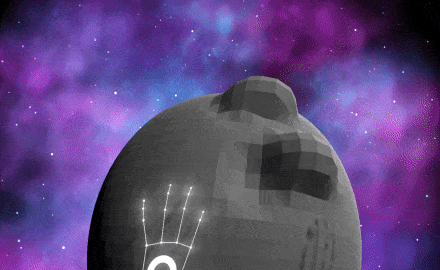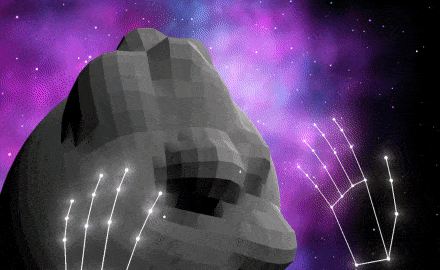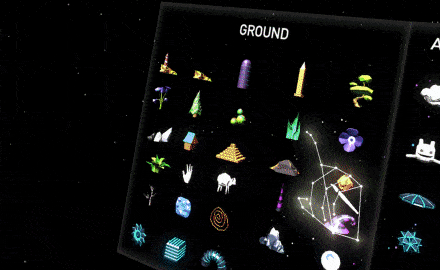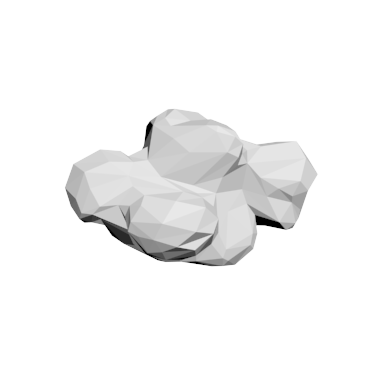
Polyworld VR
Polyworld is world building experience using just your hands in VR. It was a R&D endeavor I lead at Local Wisdom into VR and hand tracking. I lead the UX and creative while managing a talented developer to create an experience to showcase VR and natural UX input methods with the best controllers, your hands. Polyworld has been featured by Leap Motion and showcased at TedX events. Praised by all ages for it easy of use while making its users feel godlike.

Highlights of some of my favorite features

Pulling & Pushing
I tied the controls to the location of the user’s hands. Pulling creates mountains, pushing digs craters, and so on. Extensive testing proved the age-old design theory true: Game controls should do their best to get out of the player’s way.

Natural controls
I restricted the left hand to planet rotation and added icons on both hands to denote which tool the user selected. Removing the notion of a "toolbar" and placed the tools conveniently inside the user’s hands.

Painting with objects
I added a bookshelf of objects to the left side of the user and a menu of object coloring tools to the right side. The system is easy to access and even easier to understand. Testers instinctively reached to grab objects, which were then placed on the top of their hand for feedback.

Making deleting awesome
Who doesn't like a good explosion? I hit a sweet spot in testing after the first person waved their hand like a magician over the surface and say "WOW, this is insane!" Its qualitative data like that which lead me down the path making destroying things as fun as creating them.

Explore on your planet
The final mind bender was allowing the planet's creator to walk on the planet's surface. The juxtaposition of being huge and then back to human size tested extremely well. Letting the player destroy the planet like a superhero (or villain) reiterated my mantra of making the player feel powerful.

My journey to the final product
During the design phase I created both a UX hand tracking model, and a method for the Vive controllers. Both presented major pros and cons. The Vive controller allowed for increased fidelity and control of the overall experience. Interestingly, testing using your hands qualitatively was way more engrossing and fun, even with hand tracking issues. The journey from the start to finish of polyworld lead me to surprising UX insights. Many of the failures lead me to avenues of success.
Failure to success

My first UX and design involved placing the most used tools in front of the user in space. In theory this sounded great until I felt it in 3D space. It felt awkward and was more work than necessary to choose a tool. Additionally, I initial thought it was a nice touch to allow left and right handed users the choice of their dominant hand. All these choices lead to more confusion. Testing lead me to my final choice of tethering specific controls to each hand.

I tried controls on the hands at the start, but not the right ones. I wanted the user to flip their palm up to allow contextual fine tuning of whatever tool was selected for that hand. Unfortunately, the hand tracking technology just isn't there for this kinda of fidelity. Too much fidelity can add confusion and distract the user from enjoying their experience. In the end balancing how much control the user needed for each task was key.
It's called polyworld for very good reason
I like to refer to myself as a multidisciplinary designer due to my understanding of so many layered systems in design and its connection to the development stack. One area I knew before a single thing started was the need to keep CPU and GPU performance running well to ensure a good experience in VR. When 3D modeling I kept a strict budget on polygon counts for all objects due to the nature of painting with objects on the planet. Painting with object and exploding them on deletion was going to get heavy. Hence the very low poly art direction I took with the entire project.









Ending the project with new insights
Test immediately
Failing fast and hard seems like a cliche, but it’s a good principle to live by in VR and game design. Spending too much time on mock-ups isn’t always as effective as quickly prototyping virtual interactions. VR is a very physical experience, so you have to dive in the deep end. Don't be afraid to show clients rough work to get their feedback early.
Design in 3D space
3D skills are must-haves for the future of VR/augmented reality (AR) UX design. Whether you’re creating a mock-up or polishing an interaction in VR, make sure you’re using a 3D program such as Unity 3D. I love Sketch, but the program wasn't as useful when it comes to VR design. Ideally, every designer should have their own VR headset to tweak their own designs in 3D spaces.
Embrace skeuomorphism
In VR, a skeuomorph is an object that copies the design cues of its real-life counterpart (e.g., a virtual dial that requires you to physically turn the controller). Today, skeuomorphism has fallen by the wayside in favor of traditional flat design, but VR users find it hard to fight their natural instincts. If a light switch looks like it can be pressed, the user will likely reach out and try to press it.
Don’t make your users lose their lunch
Unless you want to create a vomit comet simulator, don’t move the user around too quickly. Through significant user testing, I was able to clamp the default speed just below the threshold where users would begin to feel uneasy. Polyworld players are free to move around slowly in any direction they point toward with the agency to adjust their speed and the camera according to their comfort levels.
Additional examples of VR experience

ASP
VR
Advance Sterilization Products was interested in the application of VR to teach technicians how to use their products as well as testing future workflows
Body VR
In the Body VR I aimed to create a scalable Body viewer with easily addable MOA experiences. In the MOA experience the user learns about migraines and traverses an apartment from the view point of a migraine sufferer

